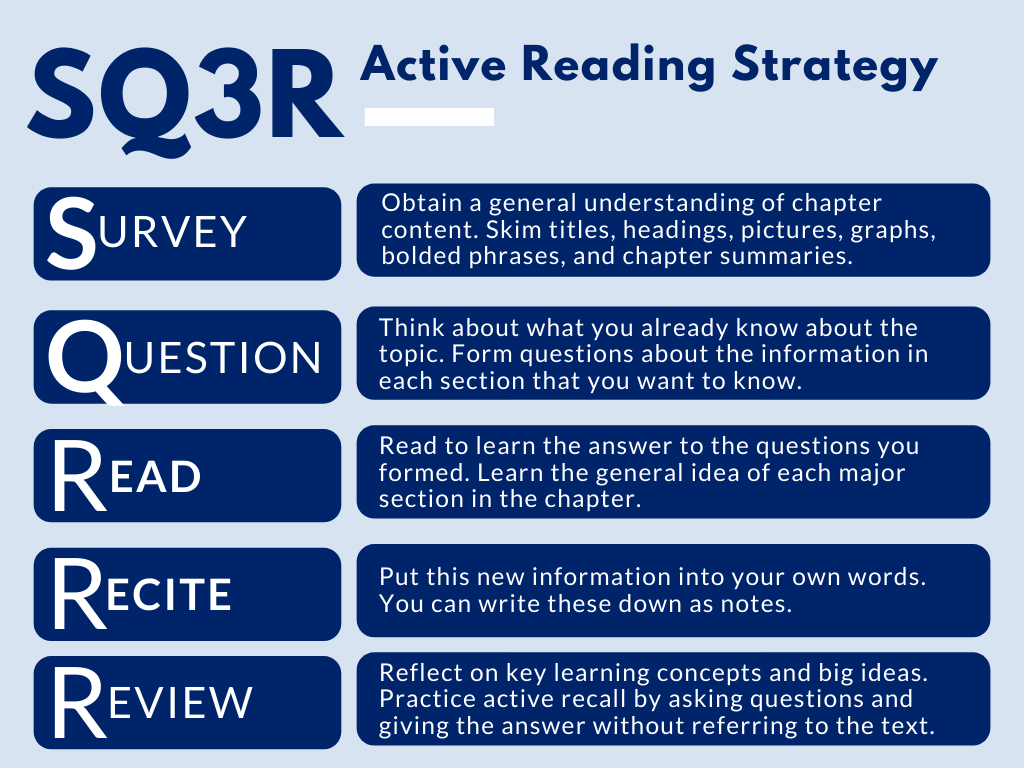Active Reading: Interaction is Key
Reading your textbooks is often overlooked as an important tool for your learning. It's important to read with a goal to help you focus on what you're reading and signal to you when you're done reading. See below for more tips on how to efficiently and effectively engage with your reading material!
Highlighting and Underlining: Mark key passages, definitions, and examples. This visually cues you to important information when you revisit the text.
Margin Notes: Jot down thoughts, questions, and summaries in the margins. This creates a personalized dialogue with the material and aids comprehension.
Discussion and Debate: Engage with the material actively by discussing it with peers or engaging in debates. Teaching others what you've learned reinforces your own understanding.
Color Coding: Assign different colors to highlight different types of information (e.g., definitions, examples, important concepts). This visual hierarchy aids quick review.
Symbols and Abbreviations: Develop a set of symbols and abbreviations to streamline your annotations. This makes your notes concise and easy to review.
Connecting Ideas: Use arrows, lines, or other visual cues to connect related ideas. This helps you see the bigger picture and understand the relationships between concepts.
Summary at the End: Write a brief summary at the end of each chapter or section. Summarizing reinforces your understanding and provides a quick reference when reviewing for exams.
Listen to the reading: Audiobooks are an effective way to read as well, especially when you listen and follow along. It engages multiple senses and can often help neurodivergent learners focus on text (try speeding the audio up to 1.25x or 1.5x).
SQ3R Method
Reading a textbook requires a different approach than reading your favorite novel. It would be difficult and ineffective to read each word of your textbook line-by-line. Since this approach seems so time-consuming, students can avoid utilizing their textbook altogether. However, your textbook contains essential information and should be a frequently visited study material - when preparing for class, when in class, and after class when you have questions.
The SQ3R approach allows you to strategicially read your textbook, using all of the different textual and visual elements that it provides.

